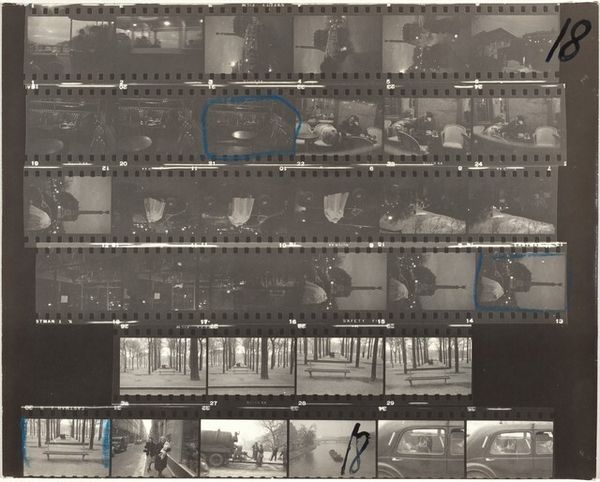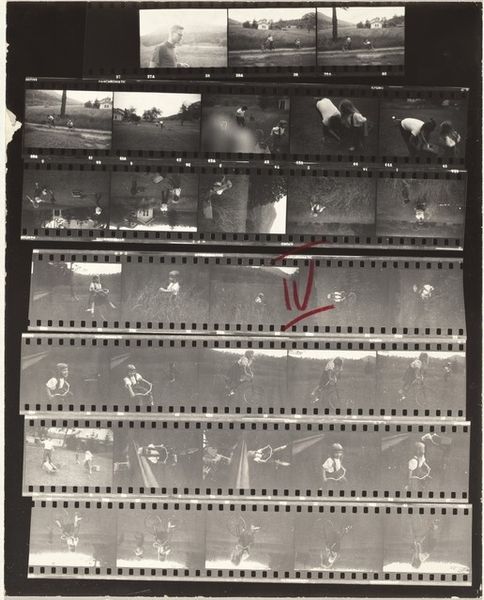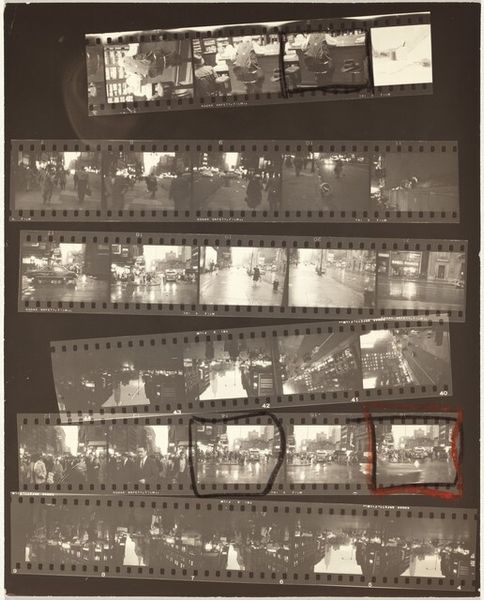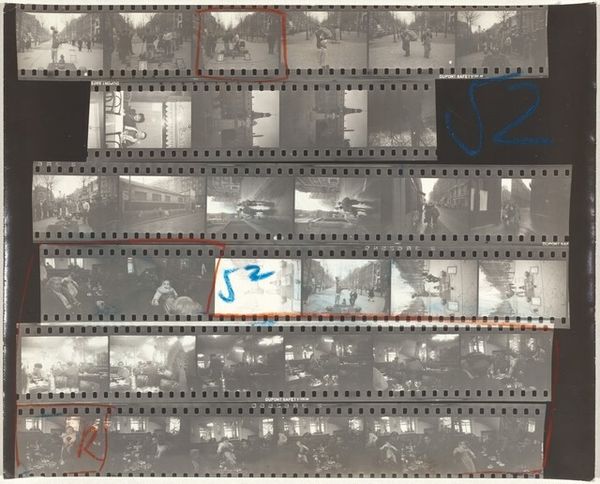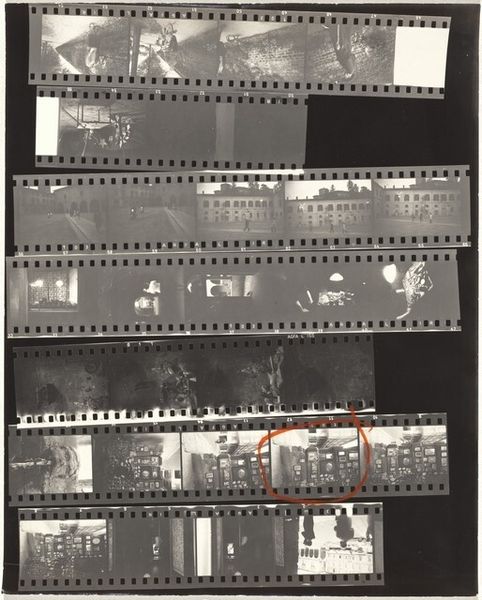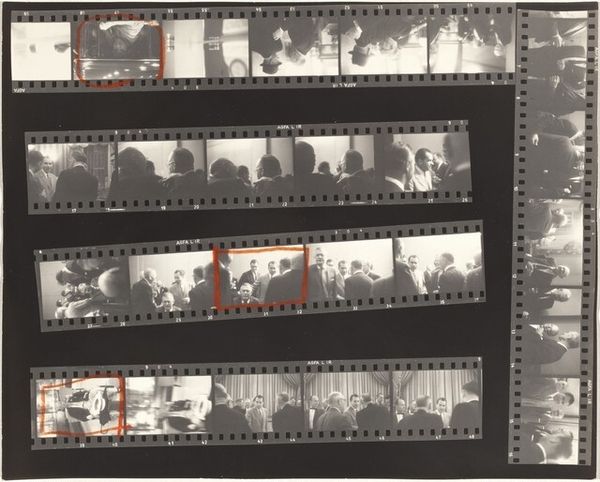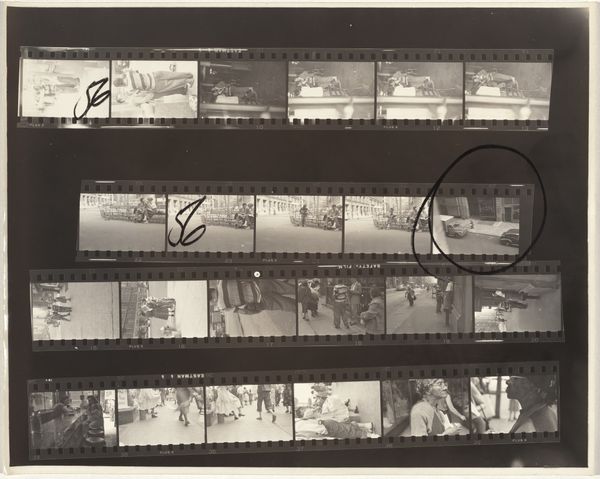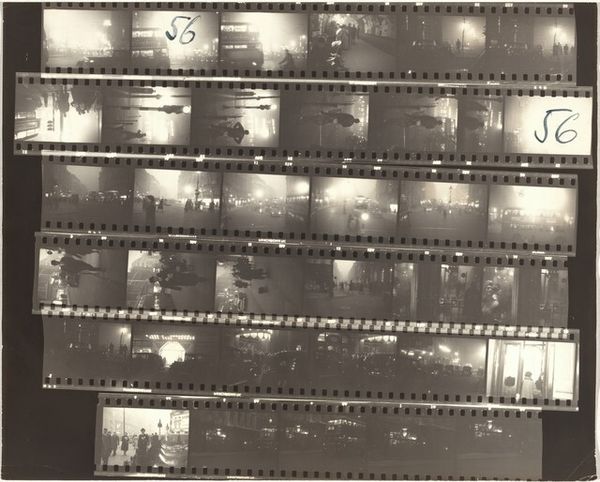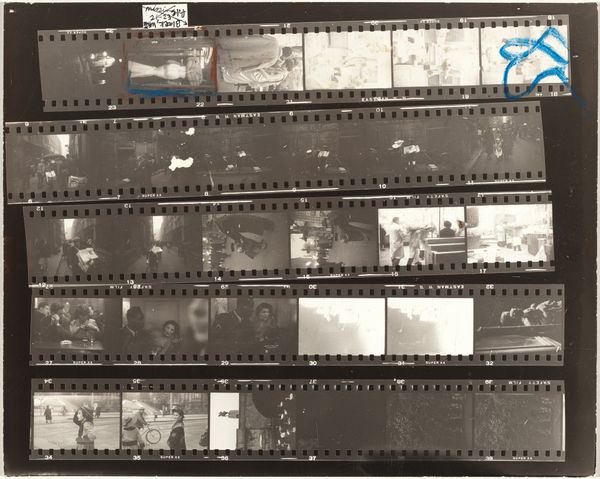
#
excavation photography
#
sale photography
#
film photography
#
wedding photography
#
culture event photography
#
couple photography
#
monochrome photography
#
holiday photography
#
film
#
celebration photography
Dimensions: overall: 20.3 x 25.8 cm (8 x 10 3/16 in.)
Copyright: National Gallery of Art: CC0 1.0
Editor: This is Robert Frank's "London 17," made between 1952 and 1953. It shows multiple frames of a film roll. It gives a sort of disjointed view of the city... almost like fleeting memories. What symbols or deeper meanings do you see embedded within these film strips? Curator: I see fragments of a post-war city, caught in time. The very medium – the film strip itself – becomes a potent symbol. What does the sequence suggest to you? Does the red "17" scrawled across it mean something, perhaps a specific thematic sequence in Frank’s larger body of work? Editor: I hadn't thought about the sequence like that, more as single shots, but "17" does make you wonder if there's an intended order, a narrative we're missing. Curator: Think about the recurring images: the street scenes, blurred figures, the pervasive sense of…what? Transience? These aren't just images of London; they're about the psychological space of observation. Each frame is a partial revelation, building into a composite understanding. Consider too, what is being intentionally left out of frame? What aren't we seeing that Frank wants us to notice through absence? Editor: The blurry figures really speak to that sense of transience. It makes you wonder about the individual stories, only glimpsed. Do you think the medium itself-- the film strip-- influenced the meaning? Curator: Absolutely. The film strip emphasizes process, a selection. Think of the "decisive moment," how Frank challenges that with his sequencing and what ultimately ends up in his final selected prints. He preserves a kind of visual palimpsest. Each layer hinting at something beneath, at stories barely captured. Editor: That's fascinating. Seeing it as a palimpsest makes me rethink the whole piece. I focused on individual images, but the layers, the absences, contribute so much more. Curator: Indeed. It shows how one might approach art history. Look beyond, into cultural memory, through fragments to build a more substantial understanding.
Comments
No comments
Be the first to comment and join the conversation on the ultimate creative platform.

